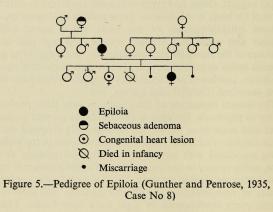This project asked how genetic researchers reconfigured disease categories during the 1950s, when human genetics was being consolidated as a scientific field. It built on recent work on the epistemological preconditions for standardized terminology and classification of diseases. Good medical classification systems are constantly being negotiated. A crucial practice is deciding on whether variation between individuals, populations, or species are potentially medically relevant. To build classes, it is necessary to identify relevant properties of disease phenomena and to disregard their other individuating properties. This project analyzed these practices as deployed by researchers studying human genetics in Britain during the decade following the Second World War, when heredity was beginning to decisively shape disease categories.
The research focused on the postwar work of leading human geneticist Lionel Penrose, head of the Galton Laboratory at University College London, editor of the journal Annals of Human Genetics, and former head of research at the Eastern Counties Mental Institution. Despite the large archive of Penrose papers in London, both Penrose and the postwar Galton Laboratory have been dramatically under-researched by historians of science; this project used his archived papers, and in particular his major book The Biology of Mental Defect (1949). Central to this project was the relationship between the construction of "cases," "populations," and "diseases," and the practices through which doctors and researchers moved from one to the other. This was also a study of the dynamics of authority between diagnostic medical work and the production of generalized knowledge about heredity in the mid-twentieth century.

